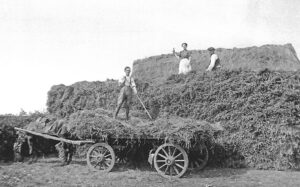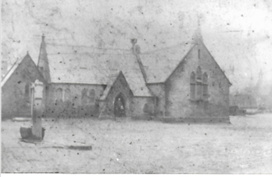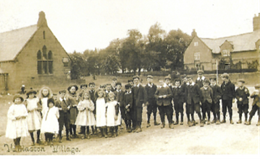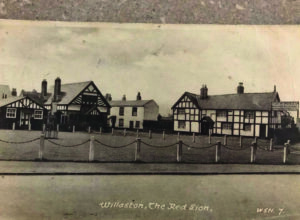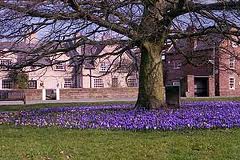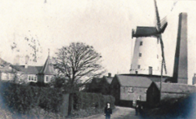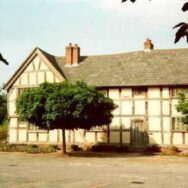About Willaston
Willaston lies in the middle of the Wirral Peninsula, approximately 4 miles east of the Dee Estuary and 4 miles west of the Mersey Estuary.
Once Willaston was an agricultural community
Now it is mainly a commuter village.
It is designated an ‘Inset Village’ within the Green Belt and the village itself is a conservation area. This gives it the benefit of a rural nature and yet it is only 8 miles from Liverpool and 10 miles from Chester. It has excellent communications with access to the motorway only 3 miles away and is only 2 miles away from Hooton Railway Station which has trains to Liverpool and Chester which in turn links to the main line railway. However, given the central position of Willaston the roads leading to the village are mainly narrow winding lanes which give a feeling of seclusion from urban intrusion.
Willaston Village Green
The first record of the Village Green in Willaston was in 1774, when it was shown on the ‘Estate map.’
The first village school was built on the Green in 1859, opposite the Red Lion Hotel (now a house) at the expense of Mr Duncan Graham. It consisted of one room, with two further rooms added around 1877.
In 1930, this school was demolished and replaced by the current school due to increasing numbers of pupils.
On 6th May 1935, a copper beech tree was planted by Charles W. Wright Esq. to commemorate the Silver Jubilee of King George V. In 1966, an annual gathering on the last Tuesday of Christmas was established by the former Hadlow Green WI to sing ‘Carols on the Green’. This tradition has continued for over 50 years and is now run by Willastonhey WI. In 1977, Christmas Lights were put on the tree and an annual ‘switch-on’ is organised by the Willaston and South Wirral Rotary Club. Every spring crocuses grow under the tree, providing a symbolic new beginning for the village.
In 2018, WR&CS had a successful fundraising campaign to purchase new lights for the tree. These lights are owned and maintained by ourselves.
Millstone on the Little Green
The millstone on the Little Green is from Willaston Mill, which used to be a working mill.
The design of the millstone village sign was by Dennis Williams, a local village artist, who also designed the clock on the Memorial Hall. The sandstone plinth was worked by John Sanderson, a local stonemason, using sandstone recovered from local village sites. Two time capsules are buried below the structure, one provided by Willaston Residents’ and Countryside Society and one by Willaston C of E School.
Willaston Mill
Willaston Mill was built in 1800 and was the largest on the Wirral.
It remained working until one night in 1915 when one of the sails broke off. The other three sails then had to be removed as they proved to be unsafe. An engine was installed and it went on grinding corn etc until the early days of the second world war.
Hadlow Road railway station
Hadlow Road railway station is a Grade II listed heritage railway station museum on the Wirral Way footpath.
It has been restored to have the look and feel of the day the station was permanently closed to passengers in 1956. It has an authentic ticket office, waiting room and telephone box. Formerly the museum was a working railway station on the single track Hooton to West Kirby branch of the Birkenhead Railway. The station is owned by Cheshire West and Chester Council and maintained by The Friends of Hadlow Road.
The Old Red Lion
The Old Red Lion was described as ‘the most attractive old hostelry in Wirral’.
It was probably built in the late sixteenth-century as a private dwelling. In the eighteenth-century it was occupied as two cottages, and in the early nineteenth-century it became the an alehouse.
The widow of the last landlord (the public house closed in 1928) occupied the building until the 1960s. In 1972 a Liverpool planner, Nigel Worth, bought the property, after an unsuccessful attempt by the old Birkenhead Brewery Company to gain planning permission for a modern ‘pub’. Restoration work was carried out during 1974 and to repair the timber frame the whole building was systematically dismantled and then rebuilt.
The southern gabled part consists of two storeys each containing a single room. In the ground floor there is a huge stone chimney-piece. the north part is older, and sections of wattle and daub were found in the external walls during restoration. The ceiling of this part has been raised to bring to bring it into line with the central part of the building. The house plate may refer to John Bennet and his wife Marie, who married in 1608, and the date 1631 may signify the time of alterations to the gabled wing. Today the property is private residences.
(First Picture and information about the Old Red Lion from Hidden Wirral Myths and Legends)
Willaston CE School
The new school was opened in 1930, when it moved from the village Green.
The school is on the edge of the village and around 210 children attend, aged 4 -11 years of age. For more information about the school, click here.
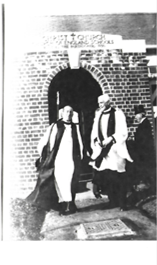
Opening of the school
The Royal British Legion in Willaston
For many years, there was a Legion building in Willaston, in which may activities took place. To find out more about the history of the Legion in Willaston, click here.
Willaston in World War One
To learn more about Willaston at the time of the First World War and the people from Willaston who gave their lives, click here.
Organisations and Businesses
Willaston is a very active village with numerous organisations and businesses. For a full list, click here.
The population is about 2500 people and Willaston still maintains its village atmosphere and community spirit. Willaston is a village large enough to be self sufficient but still small enough to remain a friendly place in which to live.
For information about the surrounding area, see the About My Area website.

